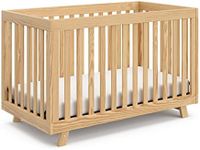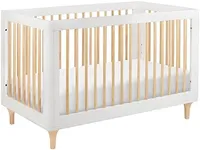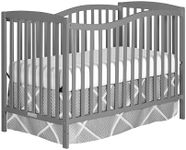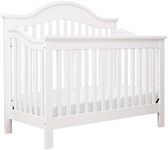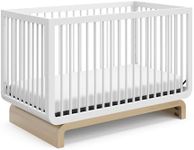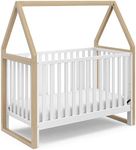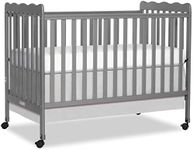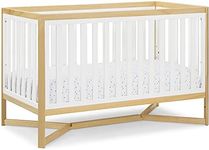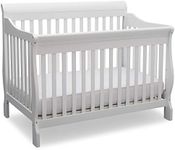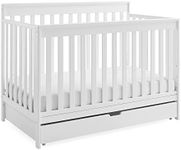Buying Guide for the Best Convertible Cribs
Choosing a convertible crib is an important decision for parents, as it will be a central piece of your child's room for several years. Convertible cribs are designed to grow with your child, transforming from a crib to a toddler bed, and sometimes even into a daybed or full-size bed. When shopping for a convertible crib, it's important to consider how long you want to use it, the space you have available, and the features that will make your life easier and safer for your child. Understanding the key specifications will help you make a choice that fits your family's needs and lifestyle.Conversion OptionsConversion options refer to how many different types of beds the crib can become as your child grows. Some cribs convert only to a toddler bed, while others can also become a daybed or even a full-size bed. This is important because it determines how long you can use the crib before needing to buy another bed. If you want a crib that will last through several stages of your child's growth, look for one with more conversion options. If you only need it for the crib and toddler bed stages, a simpler model may be enough.
Mattress Height AdjustmentsMattress height adjustment means the crib allows you to change the height of the mattress platform. This is important for safety and convenience: a higher setting makes it easier to lift a newborn in and out, while a lower setting keeps an active baby or toddler from climbing out. Cribs usually offer two to four height settings. If you want more flexibility as your child grows, look for a crib with more height options. If you plan to use the crib for a short time, fewer settings may be sufficient.
Material and Build QualityThe material and build quality of a crib refer to what it's made from and how sturdy it is. Most cribs are made from wood, but the type of wood and the quality of construction can vary. This is important for both safety and durability. Solid hardwood cribs tend to be more durable and stable, while softer woods or engineered woods may be lighter but less sturdy. If you want a crib that will last through multiple children or conversions, look for one with solid construction and high-quality materials.
Safety CertificationsSafety certifications indicate that the crib meets certain safety standards set by recognized organizations. This is crucial because it ensures the crib is free from dangerous materials and designed to prevent accidents. Look for certifications from organizations like the Juvenile Products Manufacturers Association (JPMA) or compliance with government safety standards. If safety is your top priority, always check for these certifications before making a decision.
Size and DimensionsThe size and dimensions of a crib refer to how much space it will take up in your room. Standard cribs are larger, while mini cribs are more compact. This is important if you have limited space or plan to move the crib between rooms. Measure your available space and compare it to the crib's dimensions to ensure a good fit. If you have a small nursery, a mini crib might be best, but if you want a bed that will last longer, a standard size is usually preferable.
Ease of ConversionEase of conversion describes how simple it is to change the crib from one form to another. Some cribs require extra tools or conversion kits, while others are designed for quick and easy changes. This matters if you want to avoid hassle when your child is ready to move to the next stage. If you value convenience, look for a crib with straightforward conversion mechanisms and check if conversion kits are included or sold separately.


